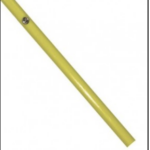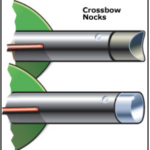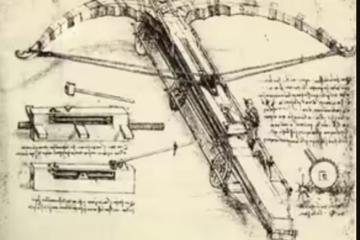Using the right arrows with your crossbow is essential for optimal performance and safety. The type, size, and weight of the arrow can all affect the accuracy and speed of your shot, as well as the overall effectiveness of your crossbow. It is important to choose arrows that are well-matched to your specific crossbow in order to get the most out of your equipment. In this guide, we will provide an overview of the different types of crossbow arrows available, as well as the factors to consider when selecting the right arrows for your crossbow. We will also discuss how to properly match your arrows to your crossbow, and provide tips for maintaining and storing your arrows. Finally, we will explore the different types of points and broadheads available for crossbow arrows, as well as the legal requirements and regulations for using them for hunting in different areas. By understanding the importance of choosing the right arrows for your crossbow, you can ensure that you are getting the most out of your equipment and enjoying the sport of archery safely.
“Arrows” or “Bolts”? What’s The Difference?
The term “bolt” is used specifically to refer to the projectile shot from a crossbow, while “arrow” can refer to projectiles shot from both crossbows and traditional bows. Technically, a bolt has no stabilizing vanes near the back, while an arrow always does. However, in common usage, the terms “bolt” and “arrow” are often used interchangeably to refer to the projectile shot from a crossbow. For the purpose of this article, we will refer to the projectile as an “arrow.”
Related: Best Crossbow Broadheads
Overview of the different types of crossbow arrows available, including carbon, aluminum, and wooden options
There are several different types of crossbow arrows available on the market, each with its own unique characteristics and advantages.
Carbon arrows are a popular choice among crossbow hunters and competitive shooters because they are lightweight and durable. They are made of carbon fiber, which is a strong and lightweight material that can withstand the high speeds and forces of a crossbow shot. Carbon arrows are also resistant to bending and breaking, making them a reliable choice for both hunting and target shooting.
Aluminum arrows are another common option for crossbows. They are less expensive than carbon arrows and are generally more durable, as they are less prone to bending or breaking. However, they are also heavier than carbon arrows, which can affect the accuracy and speed of your shot. Aluminum arrows are a good choice for those who are looking for a more budget-friendly option, or for those who are just starting out with crossbows.
Wooden arrows are not as popular as carbon or aluminum options, but they can still be used with some crossbows. They are generally less expensive than other types of arrows and are often used for traditional archery or recreational shooting. However, wooden arrows are not as durable or consistent as other types of arrows, and they may not be suitable for high-speed crossbows or hunting.
When choosing the right arrows for your crossbow, it is important to consider the specific needs and capabilities of your equipment. Different types of arrows may be better suited for different types of crossbows, so it is important to do your research and choose the option that best fits your needs.
Different Parts of a Bolt & Specs
Crossbow arrows typically range in length from 16 to 22 inches, with an average length of 20 inches. It is important to choose arrows that are the same length as recommended by the manufacturer of your crossbow. Using arrows that are too short can cause the tip to interfere with the crossbow rail, which can affect the accuracy and performance of your shot. Arrows that are slightly longer than the recommended length may still be acceptable, but it is always best to follow the manufacturer’s recommendations.
The Shaft

The shaft is the main “body” of an arrow, and it is to the shaft that all other elements of the (mentioned below) are attached. Most modern crossbow arrows are made from either aluminum or carbon; these materials are light-weight, do not splinter, and are very resistant to bending. A combination of both these materials is sometimes used as well.
Shafts come with varying degrees of stiffness; that stiffness is referred to as the “spine” of the bolt. The more resistant to bending an arrow is, the more “spine” it is said to have.
The weight of the bolt shaft is expressed in “grains.” When buying a new set of bolts, the manufacturer will either provide the total weight in grains (for example: 350), or he may simply provide you with a GPI value, which is short for “Grains Per Inch.” If only the latter is provided, you can calculate the total weight by multiplying the length of the shaft in inches by its GPI. So if the shaft is rated at 15 GPI, and the total length of the shaft is 20 inches, then the total weight of the shaft is 15 x 20 = 300 grain.
You can then convert that weight into grams if you like by simply multiplying the grain weight by 0.0648. So in the above example, the shaft weight is 300 x 0.0648 = ~19.44 grams.
The Nock

The nock is made from either plastic or aluminum in most cases, and it is attached to the back of the shaft. The purpose of a nock is to keep the bolt in place as you line up for the shot.
There are two primary types of nocks to be found on crossbow bolts: the half-moon (top image on the left), and the flat nock (bottom image). The half-moon nock has a groove that you will need to align with your string before you can fire the bolt.
Different manufacturers have different recommendations for the type of nocks that should be used on bolts fired from their crossbows. Barnett for example always recommends using half-moon nocks. If uncertain, give your manufacturer a call or send them an e-mail to find out what type of nock you need before purchasing new bolts. Check out these top carbon arrows rankings to get info on which types of nocks go best with some of the better arrows out there.
Fletchings

The fletchings, also known as vanes, are the small wings located near the nock (the groove where the string sits) at the back of the arrow. Their main purpose is to stabilize the trajectory of the arrow in flight and help it maintain a straight path. Fletchings also help to prevent the arrow from pitching or swaying to the left or right. By causing the arrow to spin around its axis during flight, the fletchings increase stability.
Most modern crossbow arrows have three fletchings made of plastic. In the past, fletchings were made of bird feathers, but these are no longer used on crossbow arrows. The length of the fletchings is typically determined by the length of the arrow shaft. As a general rule, shorter arrows have shorter fletchings and vice versa. When purchasing crossbow arrows, they will already have a set of fletchings glued in place.
The Bolt Head
The bolt head is the part of the arrow that is responsible for delivering the impact to the target. There are several different types of bolt heads that can be used with crossbow arrows, each with its own specific purpose.
Factors to consider when selecting arrows, including length, diameter, weight, and spine
There are several important factors to consider when selecting arrows for your crossbow. These include:
- Length: The length of the arrow should be appropriate for the size and draw weight of your crossbow. Using an arrow that is too short or too long can affect the accuracy and speed of your shot.
- Diameter: The diameter of the arrow, also known as the “bolt size,” should be appropriate for the size of your crossbow’s string groove and the size of your broadheads. Using an arrow that is too small or too large can cause problems with your crossbow’s performance.
- Weight: The weight of the arrow can affect the speed and accuracy of your shot. Heavier arrows may be slower but more accurate, while lighter arrows may be faster but less accurate. It is important to choose an arrow that is well-matched to your crossbow’s draw weight and speed.
- Spine: The “spine” of an arrow refers to its stiffness or flexibility. Arrows with a lower spine will be more flexible and may be better suited for crossbows with a higher draw weight, while arrows with a higher spine will be stiffer and may be better suited for crossbows with a lower draw weight. It is important to choose an arrow with the appropriate spine for your crossbow to ensure optimal performance.
By considering these factors when selecting arrows for your crossbow, you can ensure that you are using the right equipment for your specific needs and maximizing the performance of your crossbow.
How to properly match arrows to your crossbow
Matching your arrows to your crossbow is an important step in ensuring that your crossbow performs at its best. To properly match your arrows to your crossbow, you should consider the following factors:
- Draw weight: The draw weight of your crossbow refers to the amount of force required to draw the string back. It is important to choose arrows that are compatible with the draw weight of your crossbow. Using arrows that are too heavy or too light for your crossbow can affect the accuracy and speed of your shot.
- Speed: The speed of your crossbow is another important factor to consider when choosing arrows. If your crossbow has a high speed, you may want to use lighter arrows to take advantage of the extra velocity. On the other hand, if your crossbow has a lower speed, you may want to use heavier arrows to help compensate for the lack of speed.
- Other factors: In addition to draw weight and speed, you should also consider the length and diameter of your arrows when matching them to your crossbow. It is important to choose arrows that are the appropriate size and length for your crossbow to ensure optimal performance.
Tips for maintaining and storing your crossbow arrows
Properly maintaining and storing your crossbow arrows is an important part of ensuring that they perform at their best. Here are some tips for maintaining and storing your arrows:
- Fletching: Fletching refers to the feathers or vanes on the back of an arrow that help stabilize the arrow in flight. If your arrows have damaged or missing fletching, you should replace or repair them as needed.
- Cleaning: Over time, your arrows may accumulate dirt and grime, which can affect their performance. To clean your arrows, you can use a soft cloth or brush to gently remove any dirt or debris. Avoid using harsh chemicals or abrasives, as these can damage the arrows.
- Storing: When not in use, it is important to store your arrows in a dry and secure location. Avoid exposing your arrows to extreme temperatures or moisture, as these can cause damage. It is also a good idea to store your arrows in a quiver or arrow case to protect them from damage.
Different types of points and broadheads for crossbow arrows
There are several different types of points and broadheads available for crossbow arrows, each with its own specific purpose.
Field points are typically used for target shooting or practice. They are generally blunt and do not have sharp edges, making them safer to use for target shooting.
Target points are similar to field points, but they are often more precise and better suited for competition shooting. They may have a more streamlined shape or a smaller diameter to improve accuracy.
Hunting broadheads are sharp and designed for hunting game. They are typically made of stainless steel or another durable material and have multiple cutting edges to create a larger wound channel. There are several different types of hunting broadheads available, including fixed blade, mechanical, and hybrid broadheads.
It is important to choose the right type of point or broadhead for your specific needs and purposes. Field points and target points are generally safer and more suitable for target shooting, while hunting broadheads are designed for hunting game. Be sure to check the legal requirements and regulations for using different types of points and broadheads in your area.
Legal requirements and regulations for using crossbow arrows for hunting in different areas
We have an entire article for this. You can check it out from over here.
The legal requirements and regulations for using crossbow arrows for hunting vary by region and may be subject to change. It is important to familiarize yourself with the specific laws and regulations in your area before using your crossbow for hunting.
In many areas, crossbows are legal for hunting during specific seasons and may have certain restrictions, such as minimum draw weight or arrow size requirements. In some cases, crossbows may only be legal for hunting certain types of game or in certain areas.
It is important to check with your local wildlife agency or department of natural resources to find out the specific laws and regulations for using crossbows for hunting in your area. These agencies can provide you with information on the specific requirements and restrictions for hunting with a crossbow, as well as any necessary licenses or permits.
By following the legal requirements and regulations for hunting with a crossbow, you can help ensure that you are hunting responsibly and ethically.
Related Posts:



